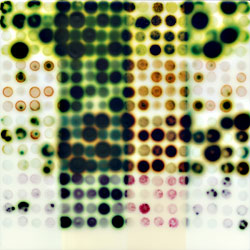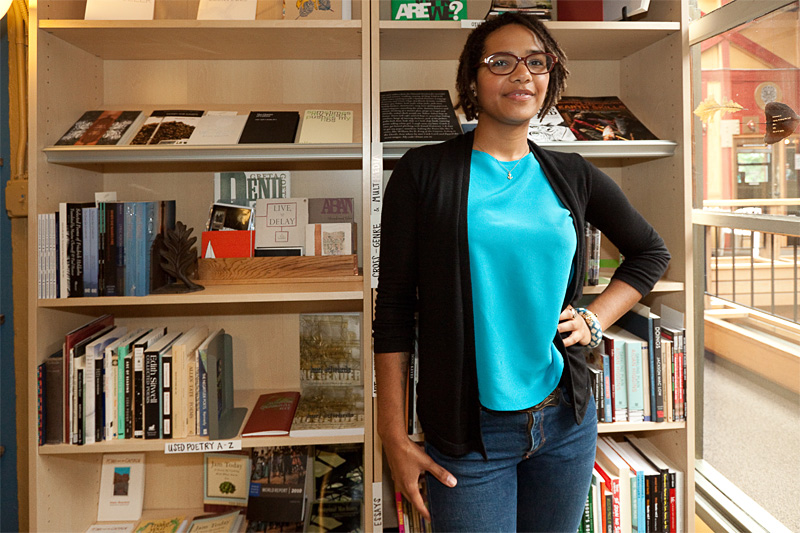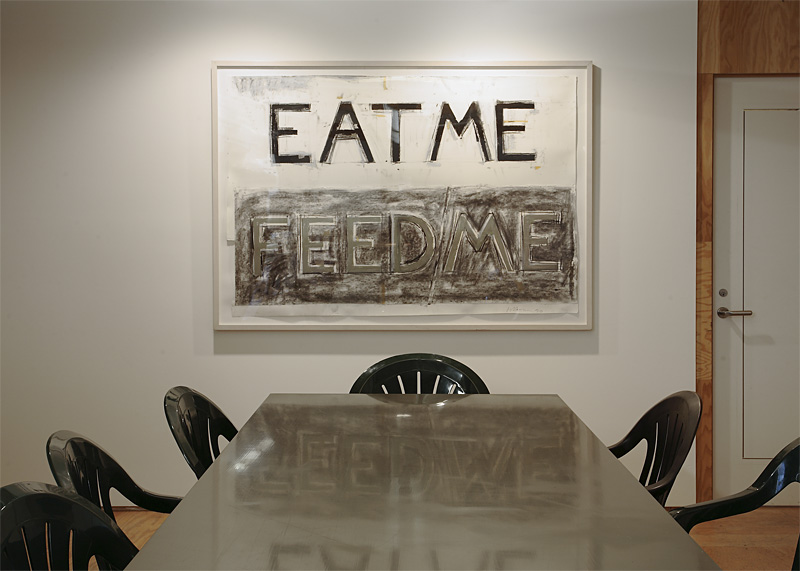Jaq Chartier’s gorgeous, sensual paintings involve the careful droppering of inks and dyes onto open, white panels, creating patterns of grid, dot, and line, with intense hues lining up and bleeding into one another. Pencil markings both track the artist’s progress and reveal the names of the pigments: Higgins Sepia Ink (used most often for calligraphy), Ruby Walnut (a compound mixed by the artist), and Eosin Y, a rich, almost fluorescent, magenta scientific stain that marks a transition in Chartier’s palette from more muted tones. Employing this hue, many of the works in her Platform Gallery show are eye-swimmingly intense. The white box of the gallery works to great effect—Chartier’s works seem to jump from the walls. Her pieces evoke the process behind their creation: You are witness to the artist’s hand, the dropped dots of color, with her penciled process notes made public. One gets a very real sense that each piece could appear, depending on the lifespan, fade, or run of each ink, altogether differently than it does here; for example, Sun Test: Time Lapse, created with a fugitive ink, is disappearing. Exposed to the sun, this work now exhibits only a smeared horizon line of intense pink, though a video of the same name illustrates a stop-action fade over several years. Chartier’s work is also shown at Brooklyn’s Schroeder Romero gallery. When the gallery moves across the East River to Chelsea next spring, Chartier will get her first solo show in Manhattan—in her words, “a very big deal.” You have until Saturday to take a look at one of the best, possibly the best, exhibits in our city right now. (Pictured: Little Grid w/4 Greens.) ADRIANA GRANT
Artist Jaq Chartier
Ink that makes you think.








